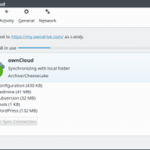It’s absolutely common for a Redmine user to ask: How do I add custom HTML code to the Wiki content? Here by Wiki content users usually mean not just a Wiki page, as in Redmine a Wiki syntax enabled content is used everywhere (well, almost) – in project description, in issue description, in news, in comments, and so on. Anyway, normally, for Redmine such inquisitive persons get quick and definite answer: There is no way!..
As this is a common question, certainly, I used to ask it too. But, as I’m a Redmine plugin developer, I was able to “give” a different answer… Depending on the features, I developed, I used to implement some capabilities for embeding custom HTML code into different places of Redmine interface. There were no plan or design – I just implemented, what I thought at that moment can be reasonable and needful. Only after implementing those things I realized, that in several my plugins I implemented almost the same feature – the possibility to embed custom HTML code into the Wiki content. Luckily it was implemented in different ways…
To be more precise this was done in two my plugins – in Hooks Manager and in WikiNG. As some of these features are not foremost and, therefore, can be unnoticed and as the feature is commonly asked, I decided to describe its implementations in this article.
More »



